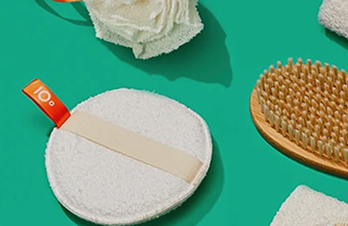The skin is our body's largest organ, constantly working to protect us from external elements while maintaining our internal balance. One of its most fascinating features is its ability to renew itself. This process, known as cell turnover, involves the shedding of old, dead skin cells and the production of new ones. But how does this renewal process work, and how can exfoliation help? Let's dive into the science behind skin renewal and explore how proper exfoliation plays a crucial role in maintaining a healthy, radiant complexion.
Understanding Skin Renewal
The skin renews itself approximately every 28 to 30 days, depending on your age and skin type. This cycle involves the formation of new cells in the deepest layer of the epidermis, the stratum basale. These cells gradually move up through the layers of the skin, eventually reaching the surface, where they become flat, dead cells known as corneocytes. These corneocytes form the skin's outermost layer, the stratum corneum, which acts as a protective barrier.
As we age, the skin renewal process slows down, leading to a buildup of dead skin cells on the surface. This buildup can result in a dull complexion, clogged pores, and an uneven skin tone. That's where exfoliation comes in.
The Role of Exfoliation in Skin Renewal
Exfoliation removes dead skin cells from the surface of the skin. You can use physical exfoliants, like scrubs or brushes, or chemical exfoliants, like alpha hydroxy acids (AHAs) and beta hydroxy acids (BHAs). Both types of exfoliation help to accelerate the skin renewal process by sloughing off dead cells and revealing the fresh, new skin underneath.
- Physical Exfoliation: This involves manually scrubbing the skin with exfoliating tools. It works by physically breaking down and removing dead skin cells, promoting a smoother texture and allowing new cells to surface more quickly.
- Chemical Exfoliation: Chemical exfoliants penetrate the skin to dissolve the bonds between dead skin cells, making it easier for them to be shed. AHAs, like glycolic acid, work on the skin's surface to exfoliate and hydrate, while BHAs, like salicylic acid, penetrate deeper into the pores to clear out debris and prevent breakouts.
How Exfoliation Speeds Up Skin Renewal
Exfoliation accelerates skin renewal by removing the barrier of dead cells that can slow down the process. When these cells are sloughed off, the skin is prompted to produce new cells more rapidly, leading to a faster turnover rate; giving you a fresher, more youthful appearance with reduced fine lines, improved texture, and a more even skin tone.
Additionally, regular exfoliation enhances the effectiveness of other skincare products. With the layer of dead cells removed, serums, moisturizers, and treatments can penetrate deeper into the skin, allowing active ingredients to work more effectively.
At Cleanlogic, we understand the importance of regular exfoliation in maintaining healthy skin. Our range of exfoliating products, from gentle scrubbing cloths to durable, charcoal exfoliators, is designed to help you achieve smooth, radiant skin while supporting the natural renewal process. Our products are crafted with care, using high-quality materials and innovative designs that make exfoliation a luxurious and effective part of your skincare routine. They're also hand assembled and packaged by individuals with disabilities right here in the U.S.
Exfoliation isn't just a skincare step—it's a science-backed way to promote skin health and reveal your natural glow. With Cleanlogic, you can trust that you're giving your skin the care it deserves, helping it to renew, refresh, and radiate with confidence.
Make sure you check out our blogs for more skin and body care tips!











0 comments